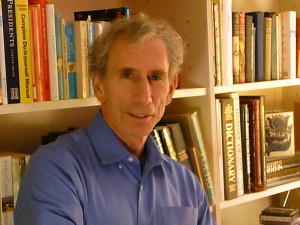
Aside from sipping cider and piecing together Halloween costumes, October is also National Breast Cancer Awareness Month. The Daily Free Press spoke with David Sherr, a professor of environmental health at the Boston University School of Public Health and the BU School of Medicine, who is an expert on the disease that has started the “pink ribbon campaign.”
Navraj Narula: As a professor of environmental health, how have you come to focus on research related to cancer?
David Sherr: There is a huge component of the environment as it relates to cancer in the United States and other countries. There is also clearly a very large contribution of environmental factors as it relates to breast cancer. Cancer panels have concluded that the majority of cancers are likely caused or made worse by environmental chemicals. We know there are certain genes that you can inherit, but only 10 percent of breast cancer can be attributed to those genes. It probably means there is a very large component that is basically preventable because it is caused by exposure to environmental chemicals.
NN: How are you currently involved in research?
DS: Our research is directed toward finding out how environmental chemicals contribute to cancer. We not only evaluate what chemicals in common use could be contributing to the doubling in breast cancer incidence over the last 50 years, but we also investigate what specific molecular processes within cancer cells are impacted by these chemicals. This work leads to the design of therapeutics that can target these pathways for treatment or prevention.
NN: How does cancer work in general? How does it come about and persist?
DS: That’s a million dollar question. The short answer is once we understand how all life and death works, we will understand cancer. Change happens within cancer cells. The metabolism of the cell changes, and it loses ability to control how much it grows. It forgets who it is — something like an identity crisis. The final thing is that it doesn’t die. Most cells in your body have the ability to self-destruct. Cells must die to develop correctly. The ability to die is self-defense against adverse change to DNA. Basically, cancer is caused by three things: inability to control growth, identity crisis, in which a cell will migrate to distant organs, and immortality.
NN: What are some warning signs of breast cancer specifically?
DS: There’s no subtle sign of it. The way it’s assessed is by self-examination or detecting a small lump, which is absolutely necessary…but by the time the tumor gets to be that size and you can detect a lump, there’s a billion cells in there. We can detect it through a mammography…it’s not perfect. There’s a risk that the X-ray does more harm than good. When you’re 20 years old, it’s a benefit to have a mammogram. If older, you can do a blood test. It’s technologically a challenge, but it’s not impossible.
NN: How does breast cancer affect populations? Do you think breast cancer poses a threat to all women?
DS: A woman’s risk of getting breast cancer is 1 in 8. Just in the United States every year, 250,000 women are diagnosed with breast cancer. And men can get breast cancer, too. Of those people, 40,000 die every year. It’s like the size of a small town. The risk of breast cancer 45 years ago was not 1 in 8, but 1 in 14. Almost half. This means that in the last 45 years, the risk of getting breast cancer has basically doubled. Treatments are now $200,000…[or] up to a million dollars a year. It’s a huge financial impact. From a social point of view, that’s a lot of people, and each of those people need a caregiver, and some might not be lucky enough to have family around. If the average life span of someone with breast cancer is 10 to 15 years, one can see how this affects the population as well.
NN: You said that the statistics for women getting breast cancer is 1 in 8. Do you know the statistics of men’s chances?
DS: It is much, much less. 1 in 800 in a lifetime.
NN: How long does breast cancer last? Is it treatable?
DS: Yes, most often, it’s treatable. But it depends on what kind of breast cancer you have. There are different subsets. One kind…if you treat it, an average of 50 percent of the women will be good in two years. There’s an 80 percent survival rate. If it’s detected early, the lump can be cut out.
NN: Are there any preventive measures you suggest college women to take?
DS: There are some lifestyle choices that can help. It’s the usual, and there’s a reason why our parents told us all these things. Always eat vegetables. Eat fruit. Keep your weight down. There is a clear association between body fat and breast cancer risk. Exercise. That’s the thing most people can control. Lots of chemicals also have contribution to breast cancer. If you educate yourself on the ones you can easily avoid, that’s what you do. The easiest one to avoid when you’re nearing puberty is cigarette smoke. If you take someone who started smoking at 18- or 19- [years-old], they do not have [an] increased risk of breast cancer. But they have [an] increased risk of lung cancer by 30-fold. But if they started smoking at 13 or 14, the risk of breast cancer has increased by five-fold. In their lifetime, they have 1 in 2 or 1 in 3 chances of getting breast cancer.















































































































